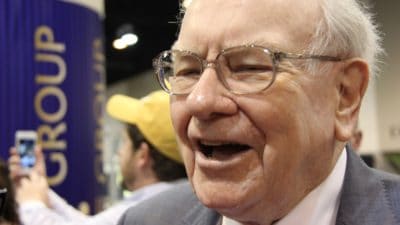With interest rates still languishing at a 300-year low, it’s not difficult to see the appeal of dividend-paying shares.
Simply put, in contrast to bank accounts and government gilts, they offer not just an inflation-beating real return, but also the prospect of a rising real return.
That’s right: as I’ve written before, it’s not difficult to discover shares that have a history of increasing their dividends year after year — and by an amount that beats the annual rise in the Retail Price Index.
So for many income-seeking investors, life consists of seeking out high-yielding shares, and then sitting back and waiting for the returns to roll in.
High yields can be a warning
Now, let’s be clear. Buy a decent-sized portfolio of such high-yielding shares, and that’s exactly what should happen.
But that isn’t to say that this is what will happen with respect to every individual share.
Because if a share consistently has a yield that’s significantly higher than the market average, then that signals that the market reckons that there could be a hiccup in the future income stream thrown off by the business.
Put another way, at the time of writing, GlaxoSmithKline, BP and BHP Billiton are respectively trading on forecast yields of 6.1%, 6.0% and 6.1%.
Which is the stock market’s way of saying that there is a perceptible risk of either a dividend cut, or a dividend being held — that is, held at the previous year’s level, rather than growing.
Misleading signals
So if yield alone isn’t a reliable indicator of a sustainable income, what is?
Some investors look for ‘dividend heroes’ — companies with long and unbroken records of increasing their dividends.
It’s a reasonable strategy, and one which works right up until the time that it doesn’t — as investors in Tesco, for instance, have found out. Its history of consistently raising its dividend for over 25 years seemed impregnable — but incoming chief executive ‘Drastic’ Dave Lewis had other views.
Some investors, too, go for the Footsie’s giants — those leviathan businesses that can shrug off even the harshest economic conditions.
That too works right up until the time that it doesn’t, as investors in BP found out after the company’s Gulf of Mexico blowout. While dividends have resumed (albeit at a lower level), the low oil price at the moment isn’t helping BP’s dividends to regain their former levels.
And you only have to look at the 6.6% forecast yield at which Royal Dutch Shell is currently trading to see that the market is nervous about Shell, as well.
So what does work?
Again, let’s be clear: there is no single reliable indicator that signals a sure-fire sustainable dividend. If there was, I’d be writing this from a beach in the Bahamas — and actually, er, probably not writing this at all.
Nevertheless, I believe there are certain indicators that collectively tend to point to a dividend’s resilience.
Amongst which, I have to say, is the period of time that a business has reliably increased its dividend — a sign, in my view, of a robust well-managed business, capable of year-on-year increases in profit.
But as the object lesson from Tesco reminds us, dividend history must be considered as only one such sustainability signal, and not one relied upon in isolation.
So what other signals are there?
Dividend cover is one. Simply put, dividend cover is the number of times that earnings exceed dividends, and can be thought of as a measure of the dividend-paying safety margin that a business has.
Typically, you’d be looking to see a level of dividend cover in the range of 1.5 to 2.2, although there are special cases, such as REITs and utilities.
Interest cover is another, and measures the proportion of profit that goes to pay debt interest. Again, the logic is straightforward: if a business is paying a large amount of its profits to lenders, then a rise in interest rates may put dividends in jeopardy.
That said, there are other debt-related measures, all saying very much the same thing (gearing, for instance). Generally speaking, you won’t go far wrong by using the one that you’re most comfortable with, or can obtain most easily.
Finally, a measure of free cash flow is useful. Profits can be manipulated, but cash flow is more difficult to massage. And as dividends have to be paid in cash, there’s a direct link between high levels of free cash, and an ability pay investors.
Picking your own dividend heroes
And there are still others, of course. Even better, in today’s internet-enabled world, it’s not difficult to set up ‘screens’ to explicitly identify those companies that meet your chosen criteria.
So what do I think you should do if you find a large FTSE 100 company with a decent yield, a reasonable history or raising its dividend, good dividend cover, low debt and good free cash flow?
Buy it, of course.







